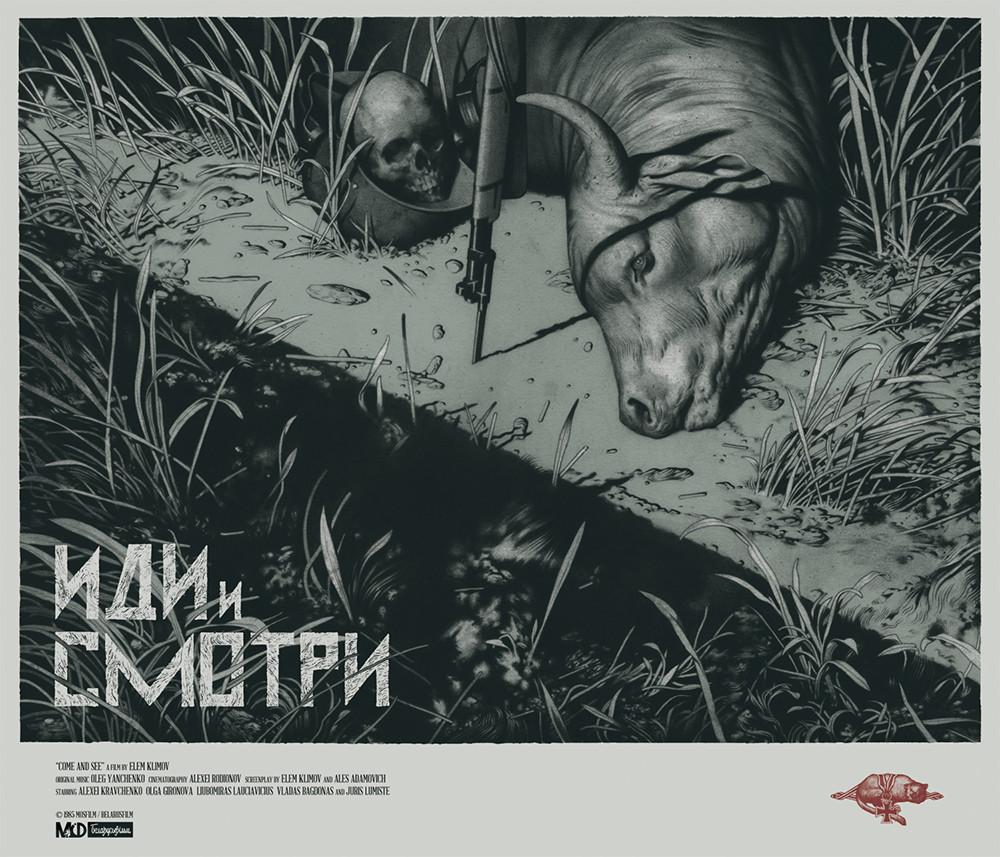If ever there was a film which encapsulated the very essence of unromantic, bleak, naked violent horror, then it is Come and See. Set in the year of 1943, the film follows the journey of a young boy drafted into a partisan force fighting against the Nazis in occupied Byelorussia. The innocent young boy Florya (Aleksey Kravchenko) is soon faced with the stark realities of the Eastern Front, the bloodiest and largest front-line in history.
It is hard to describe the landscape of Come and See. It’s almost dreamlike in its unrelenting, nightmarish horror. In between the villages, thick pine forests and farmland of Byelorussia, there is a hint throughout the film that the place could once have been beautiful: now replaced by a world of browns, greys and a blood red. The soundtrack is striking. The subjectivity captured in the film is singular amongst films I have seen, with the sounds, and much of the sights coming directly from Florya’s perspective. His tinnitus and hearing damage after a bombing strike signals the change in his character, the moment where he is broken. And it only gets worse. There are few sound collages like the ones presented in the movie, carefully layering sounds to the point of an excruciating din. The sounds of aeroplanes howling overhead, screams and cries and more, all mixed together into what becomes Florya’s own broken perceptions.
There are points in this film where I felt sick, and this is no understatement. The gravity of the situation is pressed home with such a vigorous honesty that few films capture. Some of the horror is in the psychological element, as we see Florya’s innocence stripped from him and most terrifying of all, when he is faced with the SS. Based on the real 36th Waffen Grenadier Division, led by Oskar Dirlewanger – a man so cruel and sadistic that even the SS Court was called upon to investigate his unit’s behaviour – we are made to bear witness to the barest glimpse of the atrocities committed by the SS during the war. The ending scenes are some of the most horrifying, with much of it being left to the imagination – I can’t say any more than that – you have to see it yourself. Scenes are drawn out in such a way as to fill one with a sinking dread, which only makes matters worse.
The acting is superb all round, but special commendations must go to Aleksey Kravchenko. The struggle and terrors he endures are brought to life vividly, and believably by the young actor. The subject matter is incredibly heavy – it is even said he was so overwhelmed by the filming that his hair turned grey. Supposedly, live ammunition was used during the filming also. Alongside the score, the technical aspects of the film are handled very well. Klimov makes excellent use of Steadycam to help create the subjectivity and long shots. The ‘action’ in the film, including the special effects is handled very well. Some of the visuals, like a thick rolling fog silhouetting German bikes and trucks, or the haunting imagery of a young girl, Glasha (Olga Mironova), are just incredible.
A Byelorussian man, after seeing the film said only: ‘In reality, it was much, much worse.’ I’m convinced I will never be able to imagine that horror. Come and See is as close as we are ever likely to come to these horrors. Writer J.G. Ballard called it ‘one of the greatest war films ever made’. It is uncompromising, nightmarish and brutal. If you find Schindler’s List or The Pianist difficult to watch, this film will be nigh-impossible. If you do watch the film, avoid any dubbing, and stick to a subtitled film in the original language. Don’t watch it late at night, and certainly don’t watch it for a date, but it’s well worth a watch, for words can’t really do it justice. It is a crime the film is not better known, for it really does deserve a reputation for being one of the best anti-war films of all time. 
